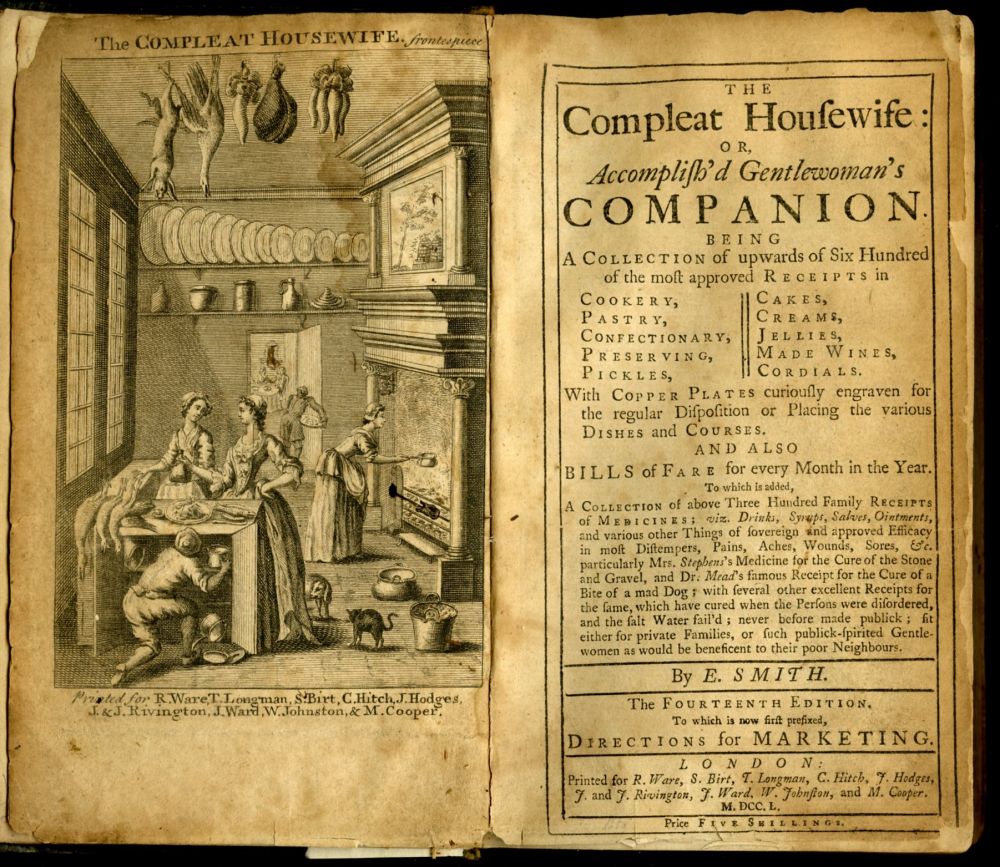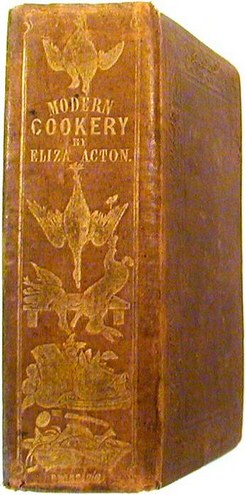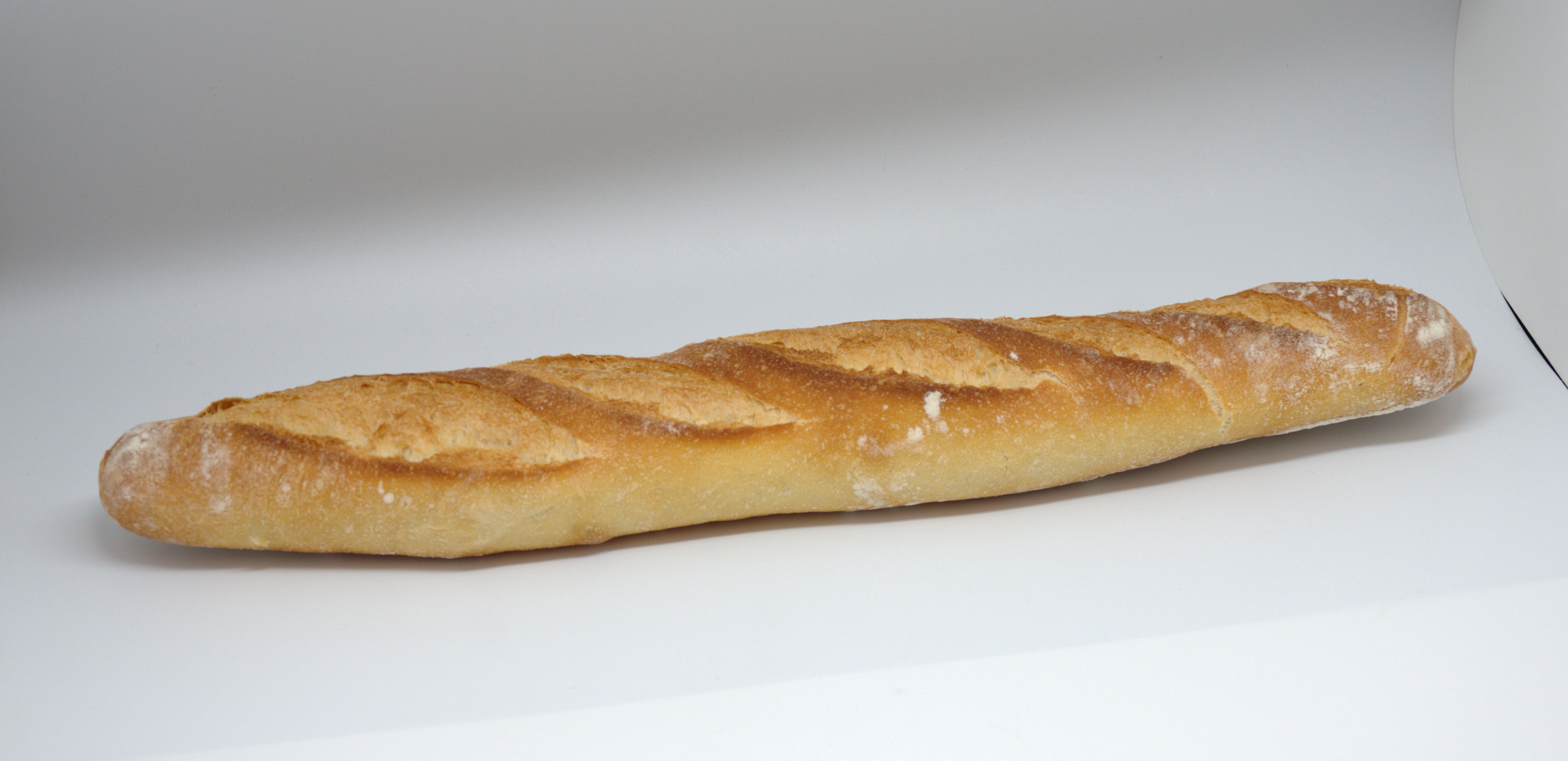|
The English Bread-Book For Domestic Use
''The English Bread Book'' is an English cookery book by Eliza Acton, first published in 1857. The work consists of a history of bread making in England, improvements to the process developed in Europe, an examination of the ingredients used and recipes of different types of bread. Book In 1845 the former poet Eliza Acton published ''Modern Cookery for Private Families'', a work that was aimed at the English middle classes. A chapter within the book provides bread making and recipes for various styles of bread. Acton undertook a re-write of the book in 1855, but was disappointed that she had not been able to add as much information about bread making into the work as she wanted to. Instead she decided, despite her increasingly poor health, that she would take on the subject in a new work, ''The English Bread-Book For Domestic Use''. Published in May 1857, this is not a recipe book along the same lines as ''Modern Cookery'', but is described by Hardy as "a serious, scientific stu ... [...More Info...] [...Related Items...] OR: [Wikipedia] [Google] [Baidu] |
Eliza Acton
Eliza Acton (17 April 1799 – 13 February 1859) was an English food writer and poet who produced one of Britain's first cookery books aimed at the domestic reader, '' Modern Cookery for Private Families''. The book introduced the now-universal practice of listing ingredients and giving suggested cooking times for each recipe. It included the first recipes in English for Brussels sprouts and for spaghetti. It also contains the first recipe for what Acton called "Christmas pudding"; the dish was normally called plum pudding, recipes for which had appeared previously, although Acton was the first to put the name and recipe together. Acton was born in 1799 in Sussex. She was raised in Suffolk where she ran a girls' boarding school before spending time in France. On her return to England in 1826 she published a collection of poetry and released her cookery book in 1845, aimed at middle class families. Written in an engaging prose, the book was well received by reviewers. It ... [...More Info...] [...Related Items...] OR: [Wikipedia] [Google] [Baidu] |
Cookery
Cooking, cookery, or culinary arts is the art, science and craft of using heat to Outline of food preparation, prepare food for consumption. Cooking techniques and ingredients vary widely, from grilling food over an open fire to using electric stoves, to baking in various types of ovens, reflecting local conditions. Types of cooking also depend on the skill levels and training of the Cook (profession), cooks. Cooking is done both by people in their own dwellings and by professional cooks and chefs in restaurants and other food establishments. Preparing food with heat or fire is an activity unique to humans. Archeological evidence of cooking fires from at least 300,000 years ago exists, but some estimate that humans started cooking up to 2 million years ago. The expansion of agriculture, commerce, trade, and transportation between civilizations in different regions offered cooks many new ingredients. New inventions and technologies, such as the invention of pottery for holding ... [...More Info...] [...Related Items...] OR: [Wikipedia] [Google] [Baidu] |
Cookery Book
A cookbook or cookery book is a kitchen reference containing recipes. Cookbooks may be general, or may specialize in a particular cuisine or category of food. Recipes in cookbooks are organized in various ways: by course (appetizer, first course, main course, dessert), by main ingredient, by cooking technique, alphabetically, by region or country, and so on. They may include illustrations of finished dishes and preparation steps; discussions of cooking techniques, advice on kitchen equipment, ingredients, and substitutions; historical and cultural notes; and so on. Cookbooks may be written by individual authors, who may be chefs, cooking teachers, or other food writers; they may be written by collectives; or they may be anonymous. They may be addressed to home cooks, to professional restaurant cooks, to institutional cooks, or to more specialized audiences. Some cookbooks are didactic, with detailed recipes addressed to beginners or people learning to cook particular dishes or ... [...More Info...] [...Related Items...] OR: [Wikipedia] [Google] [Baidu] |
Modern Cookery For Private Families
''Modern Cookery for Private Families'' is an English cookery book by Eliza Acton. It was first published by Longmans in 1845, and was a best-seller, running through 13 editions by 1853, though its sales were later overtaken by Mrs Beeton. On the strength of the book, Delia Smith called Acton "the best writer of recipes in the English language", while Elizabeth David wondered why "this peerless writer" had been eclipsed by such inferior and inexperienced imitators. It was one of the first cookery books to provide lists of ingredients, exact quantities, and cooking times, and to include Eastern recipes for chutneys. The book was well received on its first appearance; critics thought it the best cookery book they had seen, combining as it did clarity of instructions with excellent organisation. Acton's recipes and writing style have been admired by cooks including Bee Wilson, Elizabeth David, Delia Smith and Jane Grigson; Clarissa Dickson Wright praises her writing but criticises ... [...More Info...] [...Related Items...] OR: [Wikipedia] [Google] [Baidu] |
Middle Class
The middle class refers to a class of people in the middle of a social hierarchy, often defined by occupation, income, education, or social status. The term has historically been associated with modernity, capitalism and political debate. Common definitions for the middle class range from the middle fifth of individuals on a nation's income ladder, to everyone but the poorest and wealthiest 20%. Theories like "Paradox of Interest" use decile groups and wealth distribution data to determine the size and wealth share of the middle class. From a Marxist standpoint, middle class initially referred to the ' bourgeoisie,' as distinct from nobility. With the development of capitalist societies and further inclusion of the bourgeoisie into the ruling class, middle class has been more closely identified by Marxist scholars with the term 'petite bourgeoisie.' There has been significant global middle-class growth over time. In February 2009, ''The Economist'' asserted that over half of ... [...More Info...] [...Related Items...] OR: [Wikipedia] [Google] [Baidu] |
Adulterant
An adulterant is caused by the act of adulteration, a practice of secretly mixing a substance with another. Typical substances that are adulterated include but are not limited to food, cosmetics, pharmaceuticals, fuel, or other chemicals, that compromise the safety or effectiveness of the said substance. It will not normally be present in any specification or declared substances due to accident or negligence rather than intent, and also for the introduction of unwanted substances after the product has been made. Adulteration, therefore, implies that the adulterant was introduced deliberately in the initial manufacturing process, or sometimes that it was present in the raw materials and should have been removed, but was not. An adulterant is distinct from, for example, permitted food preservatives. There can be a fine line between adulterant and additive; chicory may be added to coffee to reduce the cost or achieve a desired flavor—this is adulteration if not declared, but ... [...More Info...] [...Related Items...] OR: [Wikipedia] [Google] [Baidu] |
Gristmill
A gristmill (also: grist mill, corn mill, flour mill, feed mill or feedmill) grinds cereal grain into flour and middlings. The term can refer to either the grinding mechanism or the building that holds it. Grist is grain that has been separated from its chaff in preparation for grinding. History Early history The Greek geographer Strabo reports in his ''Geography'' a water-powered grain-mill to have existed near the palace of king Mithradates VI Eupator at Cabira, Asia Minor, before 71 BC. The early mills had horizontal paddle wheels, an arrangement which later became known as the " Norse wheel", as many were found in Scandinavia. The paddle wheel was attached to a shaft which was, in turn, attached to the centre of the millstone called the "runner stone". The turning force produced by the water on the paddles was transferred directly to the runner stone, causing it to grind against a stationary "bed", a stone of a similar size and shape. This simple arrangement r ... [...More Info...] [...Related Items...] OR: [Wikipedia] [Google] [Baidu] |
Alum
An alum () is a type of chemical compound, usually a hydrated double sulfate salt of aluminium with the general formula , where is a monovalent cation such as potassium or ammonium. By itself, "alum" often refers to potassium alum, with the formula . Other alums are named after the monovalent ion, such as sodium alum and ammonium alum. The name "alum" is also used, more generally, for salts with the same formula and structure, except that aluminium is replaced by another trivalent metal ion like chromium, and/or sulfur is replaced by another chalcogen like selenium. The most common of these analogs is chrome alum . In most industries, the name "alum" (or "papermaker's alum") is used to refer to aluminium sulfate, , which is used for most industrial flocculation (the variable is an integer whose size depends on the amount of water absorbed into the alum). In medicine, "alum" may also refer to aluminium hydroxide gel used as a vaccine adjuvant. History Alum found at ar ... [...More Info...] [...Related Items...] OR: [Wikipedia] [Google] [Baidu] |
Pumpernickel
Pumpernickel (; ) is a typically heavy, slightly sweet rye bread traditionally made with sourdough starter and coarsely ground rye. It is sometimes made with a combination of rye flour and whole rye grains ("rye berries"). At one time it was traditional peasant fare, but largely during the 20th century various forms became popular with other classes through delicatessens and supermarkets. Present-day European and North American pumpernickel differ in several characteristics, including the use of additional leaveners. The North American version may have coloring and flavoring agents, added wheat flour, a higher baking temperature, and a dramatically shortened baking time. Etymology The word supposedly stems from an old Bavarian term for "hard", either referring to the process used to grind the grain into flour, or the density of the final bread product. According to ''Langenscheidts Taschenwörterbuch'' (1956), it refers to a form of " pumping work". The philologist Joha ... [...More Info...] [...Related Items...] OR: [Wikipedia] [Google] [Baidu] |
Baguette
A baguette (; ) is a long, thin type of bread of French origin that is commonly made from basic lean dough (the dough, though not the shape, is defined by French law). It is distinguishable by its length and crisp crust. A baguette has a diameter of about and a usual length of about , although a baguette can be up to long. In November 2018, documentation surrounding the "craftsmanship and culture" of making this bread was added to the French Ministry of Culture's National Inventory of Intangible Cultural Heritage. In 2022, the artisanal know-how and culture of baguette bread was inscribed to the UNESCO Intangible Cultural Heritage Lists. History Much of the history of the baguette is speculation; however, some facts can be established. Long, stick-like breads in France became more popular during the 18th century, French bakers started using " ''gruau''," a highly refined Hungarian high-milled flour in the early 19th century, Viennese steam oven baking was introduced to P ... [...More Info...] [...Related Items...] OR: [Wikipedia] [Google] [Baidu] |
Polenta
Polenta (, ) is a dish of boiled cornmeal that was historically made from other grains. The dish comes from Italy. It may be served as a hot porridge, or it may be allowed to cool and solidify into a loaf that can be baked, fried, or grilled. The variety of cereal used is usually yellow maize, but often buckwheat, white maize, or mixtures thereof may be used. Coarse grinds make a firm, coarse polenta; finer grinds make a soft, creamy polenta. Polenta is a staple of Northern Italian, Swiss and Balkan (where it is called kačamak or žganci) cuisines (and, to a lesser extent, the Central Italian one, e.g. Tuscany) and its consumption was traditionally associated with lower classes, as in times past cornmeal mush was an essential food in their everyday nutrition. Etymology covered any hulled and crushed grain, especially barley-meal, and is derived from the for 'fine flour,' which shares a root with , meaning 'dust.'''Oxford English Dictionary'' 3rd edition, 2006''s.v.''/re ... [...More Info...] [...Related Items...] OR: [Wikipedia] [Google] [Baidu] |
The Literary Gazette
''The Literary Gazette'' was a British literary magazine, established in London in 1817 with its full title being ''The Literary Gazette, and Journal of Belles Lettres, Arts, Sciences''. Sometimes it appeared with the caption title, "London Literary Gazette". It was founded by the publisher Henry Colburn, who appointed the journalist and contributor William Jerdan as editor in July 1817. Jerdan wrote most of the articles and set the character of the magazine, and then became a shareholder and eventually the owner. He retired in 1850, and the magazine ceased publication in 1863. The format of the magazine was always essentially the same, each issue consisting of about sixteen pages typeset in three columns. Illustrations were rarely included. The periodical would feature several book reviews, with the leading article being a book review occupying two or three pages. Feature sections included "Original Correspondence" and a social column as well as notice of theatre productions. A ... [...More Info...] [...Related Items...] OR: [Wikipedia] [Google] [Baidu] |








